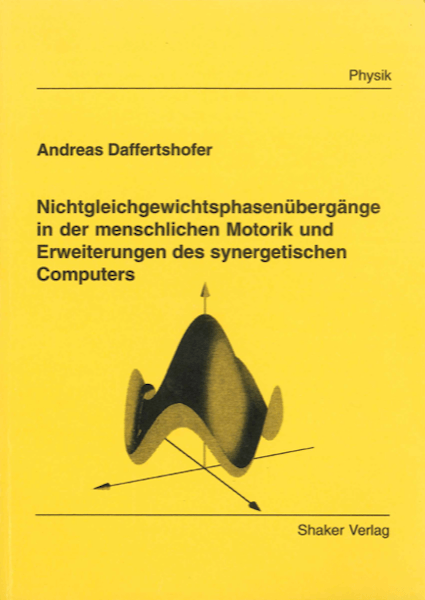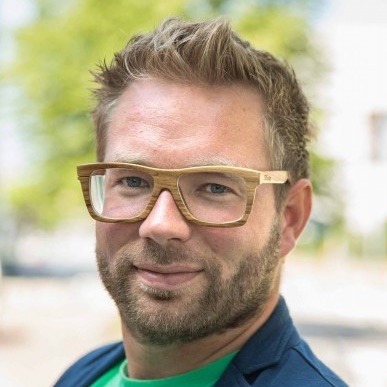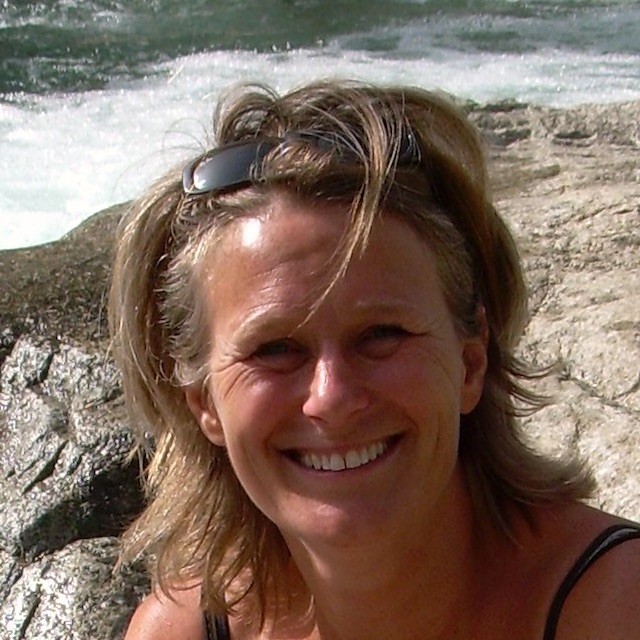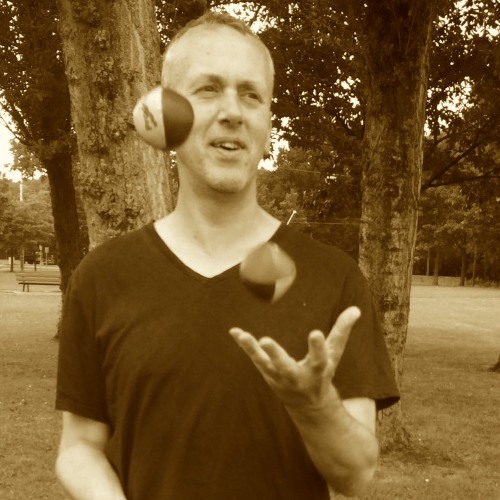Andreas Daffertshofer
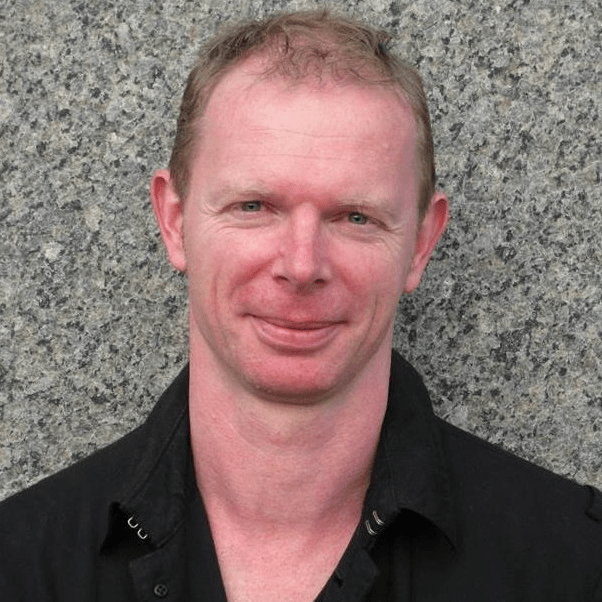
Vrije Universiteit Amsterdam
room D626
General Interests
I study complex dynamics of motor-related neural systems and its formal and conceptual assessment in terms of nonlinear dynamics and non-equilibrium statistics. Research activities cover spatio-temporal aspects of neural synchronization for information transfer during perceptual-motor tasks.
Faculty of Behavioural and Movement Sciences, Coordination Dynamics | IBBA, Research Institute MOVE
Achievements
Over the years, I appropriated various methods for the analysis of multivariate signals for kinematic, electromyographic and encephalographic data. For example, I developed methods for the extraction of principal or independent components in the vicinity of qualitative changes in motor performance yielding a significant reduction of dimension and thus allowing for the analysis of motor (in-)stabilities, in general, and for classifying (switches between) gait patterns, in particular, including the patterns of accompanying cortical activity. Furthermore, I added to several research fields in theoretical physics, ranging from quantum information to diffusive systems and generalized thermostatistics.
Current Research
I am currently working on the link between sensorimotor performance and neural synchronization using neuro-physiologically motivated stochastic neural models, bifurcation theory, and graph theory. This includes several PhD and Research Master projects involving both experimental approaches and theoretical ideas, also to investigate the interplay of dynamical and stochastic aspects of complex neural networks.
Résumé
I received my PhD at the Institute for Theoretical Physics and Synergetics, University Stuttgart, in 1996. My thesis supervisor was Prof. Dr. Dr. h.c. mult. H. Haken.
- Title: Nichtgleichgewichtsphasenübergänge in der menschlichen Motorik und Erweiterungen des synergetischen Computers.
- Topics: Non-equilibrium phase transitions in poly-rhythmic bimanual finger coordination, effects of random fluctuations, and competition dynamics of multiple order parameters (extensions of the synergetic computer).
Personal news…
- There are currently no news available
Corporate news…
- There are currently no news available
Research…
4D-EEG
Assessing Arm Function Recovery Post-Stroke. Goal of this EU-funded 4D-EEG project is to develop innovative methods for accurate localization of brain activity patterns and quantification of the interactions between multiple brain areas.Age effects in bimanual coordination
We study the relationship between altered inter- and intra-hemispheric structural and functional connectivities in the motor the network. Our focus is on the correlation between connectivies and declined motor performance in the elderly.Bimanual Coordination
We study how different control processes contribute to stabilizing the coordination between limbs, and how they change as a function of, e.g., movement frequency and amplitude, learning, development and pathology.COSMOS
Complex Oscillatory Systems: Modeling and Analysis. In this EU-funded Marie Skłodowska Curie ITN, 15 ESRs are being trained in nonlinear dynamics, numerical methods, statistical mechanics and, where needed, basics of neuroscience, physiology, and system biology.Cueing in Parkinson’s disease
We address effects of augmented visual feedback on postural control to investigate the direct effects of this feedback on postural control and its potential benefits for balance control in patients with Parkinson’s disease.Development, Aging & Learning
We develop a large arsenal of sophisticated motor behaviors from the moment we are born. In the elderly, however, motor skills are jeapordized, calling for an in-depth research for age-related changes in motor control.FirSteps – The Emergence of Walking in Children
The first independent step of a child may be small, but it represents a giant leap for its development. This project addresses the emergence of coordination patterns and motor primitives or muscle synergies in typically developing children and in children with cerebral palsy.Learn2Walk – Brain meets spine
We analyze brain and muscular activity in typically developing children and in children with cerebral palsy. We seek to unravel the reorganization of cortical and cortico-muscular activity accompanying the development of walking with the ultimate aim to design novel rehabilitation techniques for cerebral palsy.Mathematical Modeling
We relate the dynamical and stochastic properties of (networks of) neurons to understand the functional role of oscillatory activity in motor control. Focus is on the relation between frequency bands, be it switches between frequencies or interactions between coexisting oscillations.Move-Age
Understanding Ageing and Mobility. Funded by the EU as part of the Erasmus Mundus program, this international training network involves 40-odd PhD students studying age-related changes in human movement.Network-Network Interactions
We analyze cross-frequency synchronizability of complex, functional networks accompanying different oscillatory regimes with focus on effects of mutual transfer of network structures, e.g., via the type of clustering or the correlations of random components.Neural Underpinnings
Studying motor-related changes of synchronized neural activity and its network-like distribution elucidates how the brain can operate as functional unit despite numerous anatomical connections between simultaneously active neurons.Relative Phase Dynamics
The stability of coordination can often be addressed via the relative phase between the individual limb movements. We are studying in detail the effect of different interactions between limbs, effects of noise and non-autonomous forcing.Stability
For rhythmic movements the corresponding state variables are modeled as self-sustaining oscillators. We particularly focus on the stability of coordination patterns, i.e. on the interactions between oscillators.
Network…
4D-EEG
Assessing Arm Function Recovery Post-Stroke. Goal of this EU-funded 4D-EEG project is to develop innovative methods for accurate localization of brain activity patterns and quantification of the interactions between multiple brain areas.COSMOS
Complex Oscillatory Systems: Modeling and Analysis. In this EU-funded Marie Skłodowska Curie ITN, 15 ESRs are being trained in nonlinear dynamics, numerical methods, statistical mechanics and, where needed, basics of neuroscience, physiology, and system biology.Move-Age
Understanding Ageing and Mobility. Funded by the EU as part of the Erasmus Mundus program, this international training network involves 40-odd PhD students studying age-related changes in human movement.
Excerpts of scientific work
- Exploring the cortical involvement in sensorimotor integration during early stages of independent walking
Exploring the cortical involvement in sensorimotor integration during early stages of independent walking
Koster, R. A. J., Zandvoort, C. S., Kerkman, J. N., Daffertshofer, A. & Dominici, N., Jun 2025, In: Experimental Brain Research. 243, 6, p. 1-14 14 p., 153.Research output: Contribution to Journal › Article › Academic › peer-review
- The complexity of caffeine's effects on regular coffee consumers
The complexity of caffeine's effects on regular coffee consumers
Lesar, M., Sajovic, J., Novaković, D., Primožič, M., Vetrih, E., Sajovic, M., Žnidaršič, A., Rogelj, P., Daffertshofer, A., Levnajić, Z. & Drevenšek, G., 30 Jan 2025, In: Heliyon. 11, 2, p. 1-14 14 p., e41471.Research output: Contribution to Journal › Article › Academic › peer-review
- Machine learning approaches to predict whether MEPs can be elicited via TMS
Machine learning approaches to predict whether MEPs can be elicited via TMS
Jin, F., Bruijn, S. M. & Daffertshofer, A., Oct 2024, In: Journal of Neuroscience Methods. 410, p. 1-13 13 p., 110242.Research output: Contribution to Journal › Article › Academic › peer-review
- Lateralized modulation of cortical beta power during human gait is related to arm swing
Lateralized modulation of cortical beta power during human gait is related to arm swing
Borhanazad, M., van Wijk, B. C. M., Buizer, A. I., Kerkman, J. N., Bekius, A., Dominici, N. & Daffertshofer, A., 19 Jul 2024, In: iScience. 27, 7, 110301.Research output: Contribution to Journal › Article › Academic › peer-review
- Overlap in the cortical representation of hand and forearm muscles as assessed by navigated TMS
Overlap in the cortical representation of hand and forearm muscles as assessed by navigated TMS
Jin, F., Bruijn, S. M. & Daffertshofer, A., Sept 2023, In: NeuroImage: Reports. 3, 3, p. 1-8 8 p., 100183.Research output: Contribution to Journal › Article › Academic › peer-review
- Development of running is not related to time since onset of independent walking, a longitudinal case study
Development of running is not related to time since onset of independent walking, a longitudinal case study
Bach, M. M., Zandvoort, C. S., Cappellini, G., Ivanenko, Y., Lacquaniti, F., Daffertshofer, A. & Dominici, N., 16 Feb 2023, In: Frontiers in Human Neuroscience. 17, p. 1-12 12 p., 1101432.Research output: Contribution to Journal › Article › Academic › peer-review
- The energetic effect of hip flexion and retraction in walking at different speeds: a modeling study
The energetic effect of hip flexion and retraction in walking at different speeds: a modeling study
Jin, J., Kistemaker, D., van Dieën, J. H., Daffertshofer, A. & Bruijn, S. M., 2023, In: PeerJ. 11, 1, p. 1-22 22 p., e14662.Research output: Contribution to Journal › Article › Academic › peer-review
- Does ankle push-off correct for errors in anterior–posterior foot placement relative to center-of-mass states?
Does ankle push-off correct for errors in anterior–posterior foot placement relative to center-of-mass states?
Jin, J., van Dieën, J. H., Kistemaker, D., Daffertshofer, A. & Bruijn, S. M., 2023, In: PeerJ. 11, 5, e15375.Research output: Contribution to Journal › Article › Academic › peer-review
- Predicting vertical ground reaction forces from 3D accelerometry using reservoir computers leads to accurate gait event detection
Predicting vertical ground reaction forces from 3D accelerometry using reservoir computers leads to accurate gait event detection
Bach, M. M., Dominici, N. & Daffertshofer, A., 26 Oct 2022, In: Frontiers in Sports and Active Living. 4, p. 1-12 12 p., 1037438.Research output: Contribution to Journal › Article › Academic › peer-review
- Cortical contributions to locomotor primitives in toddlers and adults
Cortical contributions to locomotor primitives in toddlers and adults
Zandvoort, C. S., Daffertshofer, A. & Dominici, N., 21 Oct 2022, In: iScience. 25, 10, p. 1-18 18 p., 105229.Research output: Contribution to Journal › Article › Academic › peer-review
- Accounting for Stimulations That Do Not Elicit Motor-Evoked Potentials When Mapping Cortical Representations of Multiple Muscles
Accounting for Stimulations That Do Not Elicit Motor-Evoked Potentials When Mapping Cortical Representations of Multiple Muscles
Jin, F., Bruijn, S. M. & Daffertshofer, A., Jun 2022, In: Frontiers in Human Neuroscience. 16, June, p. 1-11 11 p., 920538.Research output: Contribution to Journal › Article › Academic › peer-review
- Unimanual sensorimotor learning—A simultaneous EEG-fMRI aging study
Unimanual sensorimotor learning—A simultaneous EEG-fMRI aging study
Chettouf, S., Triebkorn, P., Daffertshofer, A. & Ritter, P., May 2022, In: Human Brain Mapping. 43, 7, p. 2348-2364 17 p.Research output: Contribution to Journal › Article › Academic › peer-review
- Body Weight Control Is a Key Element of Motor Control for Toddlers’ Walking
Body Weight Control Is a Key Element of Motor Control for Toddlers’ Walking
Kerkman, J. N., Zandvoort, C. S., Daffertshofer, A. & Dominici, N., Mar 2022, In: Frontiers in Network Physiology. 2, March, p. 1-12 12 p., 844607.Research output: Contribution to Journal › Article › Academic › peer-review
- Interlayer connectivity reconstruction for multilayer brain networks using phase oscillator models
Interlayer connectivity reconstruction for multilayer brain networks using phase oscillator models
Tewarie, P., Prasse, B., Meier, J., Byrne, De Domenico, M., Stam, C. J., Brookes, M. J., Hillebrand, A., Daffertshofer, A., Coombes, S. & Van Mieghem, P., 1 Jun 2021, In: New Journal of Physics. 23, 6, 063065.Research output: Contribution to Journal › Article › Academic › peer-review
- Muscle Synergies in Children Walking and Running on a Treadmill
Muscle Synergies in Children Walking and Running on a Treadmill
Bach, M. M., Daffertshofer, A. & Dominici, N., 10 May 2021, In: Frontiers in Human Neuroscience. 15, May, p. 1-14 14 p., 637157.Research output: Contribution to Journal › Article › Academic › peer-review
- Neuromuscular Control before and after Independent Walking Onset in Children with Cerebral Palsy
Neuromuscular Control before and after Independent Walking Onset in Children with Cerebral Palsy
Bekius, A., Zandvoort, C. S., Kerkman, J. N., van de Pol, L. A., Vermeulen, R. J., Harlaar, J., Daffertshofer, A., Buizer, A. I. & Dominici, N., 12 Apr 2021, In: Sensors (Basel, Switzerland). 21, 8, 2714.Research output: Contribution to Journal › Article › Academic › peer-review
- The development of mature gait patterns in children during walking and running
The development of mature gait patterns in children during walking and running
Bach, M. M., Daffertshofer, A. & Dominici, N., Apr 2021, In: European Journal of Applied Physiology. 121, 4, p. 1073-1085Research output: Contribution to Journal › Article › Academic › peer-review
- The validation of new phase-dependent gait stability measures: A modelling approach
The validation of new phase-dependent gait stability measures: A modelling approach
Jin, J., Kistemaker, D., van Dieen, J., Daffertshofer, A. & Bruijn, S., Feb 2021, In: Royal Society Open Science. 8, 2, p. 1-18 18 p., 201122.Research output: Contribution to Journal › Article › Academic › peer-review
- On the Validity of Neural Mass Models
On the Validity of Neural Mass Models
Deschle, N., Ignacio Gossn, J., Tewarie, P., Schelter, B. & Daffertshofer, A., 5 Jan 2021, In: Frontiers in Computational Neuroscience. 14, 581040.Research output: Contribution to Journal › Article › Academic › peer-review
- Are early measured resting-state EEG parameters predictive for upper limb motor impairment six months poststroke?
Are early measured resting-state EEG parameters predictive for upper limb motor impairment six months poststroke?
Saes, M., Meskers, C. G. M., Daffertshofer, A., van Wegen, E. E. H. & Kwakkel, G., 1 Jan 2021, In: Clinical Neurophysiology. 132, 1, p. 56-62Research output: Contribution to Journal › Article › Academic › peer-review
- Early Development of Locomotor Patterns and Motor Control in Very Young Children at High Risk of Cerebral Palsy, a Longitudinal Case Series
Early Development of Locomotor Patterns and Motor Control in Very Young Children at High Risk of Cerebral Palsy, a Longitudinal Case Series
Bekius, A., Bach, M. M., van de Pol, L. A., Harlaar, J., Daffertshofer, A., Dominici, N. & Buizer, A. I., 2021, In: Frontiers in Human Neuroscience. 15, p. 659415 659415.Research output: Contribution to Journal › Article › Academic › peer-review
- Ankle muscles drive mediolateral center of pressure control to ensure stable steady state gait
Ankle muscles drive mediolateral center of pressure control to ensure stable steady state gait
Van leeuwen, A. M., Van dieën, J. H., Daffertshofer, A. & Bruijn, S. M., 2021, In: Scientific Reports. 11, p. 1-14 14 p., 21481.Research output: Contribution to Journal › Article › Academic › peer-review
- Active foot placement control ensures stable gait: Effect of constraints on foot placement and ankle moments
Active foot placement control ensures stable gait: Effect of constraints on foot placement and ankle moments
van Leeuwen, A. M., van Dieën, J. H., Daffertshofer, A. & Bruijn, S. M., 17 Dec 2020, In: PLoS ONE. 15, 12, p. 1-19 19 p., e0242215.Research output: Contribution to Journal › Article › Academic › peer-review
- Dynamic Functional Connectivity between order and randomness and its evolution across the human adult lifespan
Dynamic Functional Connectivity between order and randomness and its evolution across the human adult lifespan
Battaglia, D., Boudou, T., Hansen, E. C. A., Lombardo, D., Chettouf, S., Daffertshofer, A., McIntosh, A. R., Zimmermann, J., Ritter, P. & Jirsa, V., 15 Nov 2020, In: NeuroImage. 222, p. 1-16 16 p., 117156.Research output: Contribution to Journal › Article › Academic › peer-review
- The Pelvic Girdle Pain deadlock: 2. Topics that, so far, have remained out of focus
The Pelvic Girdle Pain deadlock: 2. Topics that, so far, have remained out of focus
Meijer, O. G., Barbe, M. F., Prins, M. R., Lutke Schipholt, I. J., Hu, H. & Daffertshofer, A., Aug 2020, In: Musculoskeletal Science and Practice. 48, p. 1-11 11 p., 102166.Research output: Contribution to Journal › Article › Academic › peer-review
- Muscle Synergies and Coherence Networks Reflect Different Modes of Coordination During Walking
Muscle Synergies and Coherence Networks Reflect Different Modes of Coordination During Walking
Kerkman, J. N., Bekius, A., Boonstra, T. W., Daffertshofer, A. & Dominici, N., Jul 2020, In: Frontiers in Physiology. 11, July, p. 1-13 13 p., 751.Research output: Contribution to Journal › Article › Academic › peer-review
- Is Resting-State EEG Longitudinally Associated With Recovery of Clinical Neurological Impairments Early Poststroke? A Prospective Cohort Study
Is Resting-State EEG Longitudinally Associated With Recovery of Clinical Neurological Impairments Early Poststroke? A Prospective Cohort Study
Saes, M., Zandvliet, S. B., Andringa, A. S., Daffertshofer, A., Twisk, J. W. R., Meskers, C. G. M., van Wegen, E. E. H. & Kwakkel, G., May 2020, In: Neurorehabilitation and Neural Repair. 34, 5, p. 389-402 14 p.Research output: Contribution to Journal › Article › Academic › peer-review
- Exact firing rate model reveals the differential effects of chemical versus electrical synapses in spiking networks
Exact firing rate model reveals the differential effects of chemical versus electrical synapses in spiking networks
Pietras, B., Devalle, F., Roxin, A., Daffertshofer, A. & Montbrió, E., Oct 2019, In: Physical Review E. 100, 4, p. 1-12 12 p., 042412.Research output: Contribution to Journal › Article › Academic › peer-review
- The human sensorimotor cortex fosters muscle synergies through cortico-synergy coherence
The human sensorimotor cortex fosters muscle synergies through cortico-synergy coherence
Zandvoort, C. S., van Dieën, J. H., Dominici, N. & Daffertshofer, A., 1 Oct 2019, In: NeuroImage. 199, p. 30-37 8 p.Research output: Contribution to Journal › Article › Academic › peer-review
- The effect of cerebellar transcranial direct current stimulation to improve standing balance performance early post-stroke, study protocol of a randomized controlled trial
The effect of cerebellar transcranial direct current stimulation to improve standing balance performance early post-stroke, study protocol of a randomized controlled trial
Zandvliet, S. B., Meskers, C. G. M., Nijland, R. H. M., Daffertshofer, A., Kwakkel, G. & van Wegen, E. E. H., 1 Aug 2019, In: International Journal of Stroke. 14, 6, p. 650-657 8 p.Research output: Contribution to Journal › Article › Academic › peer-review
- Directed Flow of Information in Chimera States
Directed Flow of Information in Chimera States
Deschle, N., Daffertshofer, A., Battaglia, D. & Martens, E. A., 25 Jun 2019, In: Frontiers in Applied Mathematics and Statistics. 5, JUNE, p. 1-8 8 p., 28.Research output: Contribution to Journal › Article › Academic › peer-review
- How does upper extremity Fugl-Meyer motor score relate to resting-state EEG in chronic stroke? A power spectral density analysis
How does upper extremity Fugl-Meyer motor score relate to resting-state EEG in chronic stroke? A power spectral density analysis
Saes, M., Meskers, C. G. M., Daffertshofer, A., de Munck, J. C., Kwakkel, G. & van Wegen, E. E. H., May 2019, In: Clinical Neurophysiology. 130, 5, p. 856-862 7 p.Research output: Contribution to Journal › Article › Academic › peer-review
- Age-related differences in neural spectral power during motor learning
Age-related differences in neural spectral power during motor learning
Rueda-Delgado, L. M., Heise, K. F., Daffertshofer, A., Mantini, D. & Swinnen, S. P., May 2019, In: Neurobiology of Aging. 77, p. 44-57 14 p.Research output: Contribution to Journal › Article › Academic › peer-review
- A combined diffusion-weighted and electroencephalography study on age-related differences in connectivity in the motor network during bimanual performance
A combined diffusion-weighted and electroencephalography study on age-related differences in connectivity in the motor network during bimanual performance
Babaeeghazvini, P., Rueda-Delgado, L. M., Zivari Adab, H., Gooijers, J., Swinnen, S. & Daffertshofer, A., 15 Apr 2019, In: Human Brain Mapping. 40, 6, p. 1799-1813 15 p.Research output: Contribution to Journal › Article › Academic › peer-review
- Tightening up the control of treadmill walking: Effects of maneuverability walking: Effects of maneuverability range and acoustic pacing on stride-to-stride fluctuations
Tightening up the control of treadmill walking: Effects of maneuverability walking: Effects of maneuverability range and acoustic pacing on stride-to-stride fluctuations
Roerdink, M., De Jonge, C. P., Smid, L. M. & Daffertshofer, A., 22 Mar 2019, In: Frontiers in Physiology. 10, MARCH, 9 p., 257.Research output: Contribution to Journal › Article › Academic › peer-review
- Effect of visual feedback during a dynamic postural task on brain activity in persons with Parkinson's disease
Effect van visuele feedback tijdens een dynamische houdingstaak op hersenactiviteit bij mensen met de ziekte van Parkinson
Translated title of the contribution :Effect of visual feedback during a dynamic postural task on brain activity in persons with Parkinson's disease Research output: Contribution to Journal › Article › Popular
- First-order phase transitions in the Kuramoto model with compact bimodal frequency distributions
First-order phase transitions in the Kuramoto model with compact bimodal frequency distributions
Pietras, B., Deschle, N. & Daffertshofer, A., Dec 2018, In: Physical Review E. 98, 6, p. 1-15 15 p., 062219.Research output: Contribution to Journal › Article › Academic › peer-review
- Distinct criticality of phase and amplitude dynamics in the resting brain
Distinct criticality of phase and amplitude dynamics in the resting brain
Daffertshofer, A., Ton, R., Kringelbach, M. L., Woolrich, M. & Deco, G., Oct 2018, In: NeuroImage. 180, Part B, p. 442-447 6 p.Research output: Contribution to Journal › Article › Academic › peer-review
- Using spike train distances to identify the most discriminative neuronal subpopulation
Using spike train distances to identify the most discriminative neuronal subpopulation
Satuvuori, E., Mulansky, M., Daffertshofer, A. & Kreuz, T., 1 Oct 2018, In: Journal of Neuroscience Methods. 308, p. 354-365 12 p.Research output: Contribution to Journal › Article › Academic › peer-review
- Incongruent visual feedback during a postural task enhances cortical alpha and beta modulation in patients with Parkinson's disease
Incongruent visual feedback during a postural task enhances cortical alpha and beta modulation in patients with Parkinson's disease
van den Heuvel, M. R. C., van Wegen, E. E. H., Beek, P. J., Kwakkel, G. & Daffertshofer, A., Jul 2018, In: Clinical Neurophysiology. 129, 7, p. 1357-1365 9 p.Research output: Contribution to Journal › Article › Academic › peer-review
- Network structure of the human musculoskeletal system shapes neural interactions on multiple time scales
Network structure of the human musculoskeletal system shapes neural interactions on multiple time scales
Kerkman, J. N., Daffertshofer, A., Gollo, L. L., Breakspear, M. & Boonstra, T. W., 27 Jun 2018, In: Science advances. 4, 6, eaat0497.Research output: Contribution to Journal › Article › Academic › peer-review
- Disentangling Somatosensory Evoked Potentials of the Fingers: Limitations and Clinical Potential
Disentangling Somatosensory Evoked Potentials of the Fingers: Limitations and Clinical Potential
Kalogianni, K., Daffertshofer, A., van der Helm, F. C. T., Schouten, A. C., de Munck, J. C., Kwakkel, G., Meskers, C. G. M., van Wegen, E. E. H., Andringa, A. S., Hoevenaars, D., Winters, C., Zandvliet, S., Solis-Escalante, T., Yuan-Yang, Vlaar, M. P., Filatova, L., Dewald, J. P. A., Yao, J. & On Behalf Of The 4Deeg Consortium, May 2018, In: Brain Topography. 31, 3, p. 498-512 15 p.Research output: Contribution to Journal › Article › Academic › peer-review
- Spatial resolution for EEG source reconstruction—A simulation study on SEPs
Spatial resolution for EEG source reconstruction—A simulation study on SEPs
Kalogianni, K., de Munck, J. C., Nolte, G., Vardy, A. N., van der Helm, F. C. T. & Daffertshofer, A., 1 May 2018, In: Journal of Neuroscience Methods. 301, p. 9-17 9 p.Research output: Contribution to Journal › Article › Academic › peer-review
- Comparison of multi-tensor diffusion models' performance for white matter integrity estimation in chronic stroke
Comparison of multi-tensor diffusion models' performance for white matter integrity estimation in chronic stroke
on behalf of the 4D EEG Consortium, 23 Apr 2018, In: Frontiers in Neuroscience. 12, APR, 247.Research output: Contribution to Journal › Article › Academic › peer-review
- Determination of head conductivity frequency response in vivo with optimized EIT-EEG
Determination of head conductivity frequency response in vivo with optimized EIT-EEG
Dabek, J., Kalogianni, K., Rotgans, E., van der Helm, F. C. T., Kwakkel, G., van Wegen, E. E. H., Daffertshofer, A. & de Munck, J. C., 15 Feb 2016, In: NeuroImage. 127, p. 484-495 12 p.Research output: Contribution to Journal › Article › Academic › peer-review
- Learning-related changes of beta-activity in motor areas
Learning-related changes of beta-activity in motor areas
Daffertshofer, A., Houweling, S., van Dijk, B. W. & Beek, P. J., 2009, In: International Journal of BioElectromagnetism. 11, 3, p. 116-119 4 p.Research output: Contribution to Journal › Article › Academic › peer-review
- Classical typicality of the canonical distribution
Classical typicality of the canonical distribution
Plastino, A. R. & Daffertshofer, A., 1 Nov 2008, In: Europhysics Letters. 84, 3, 30006.Research output: Contribution to Journal › Article › Academic › peer-review
- Synchronization in perceptual-motor integration
Synchronization in perceptual-motor integration
Houweling, S., Daffertshofer, A., van Dijk, B. & Beek, P. J., Jun 2007, In: International Congress Series. 1300, p. 333-336 4 p.Research output: Contribution to Journal › Article › Academic › peer-review
- Multiple time scales in serial production of force: A tutorial on power spectral analysis of motor variability
Multiple time scales in serial production of force: A tutorial on power spectral analysis of motor variability
Wing, A., Daffertshofer, A. & Pressing, J., Nov 2004, In: Human Movement Science. 23, 5, p. 569-590 22 p.Research output: Contribution to Journal › Article › Academic › peer-review
- Diffusion of periodically forced brownian particles moving in space-periodic potentials
Diffusion of periodically forced brownian particles moving in space-periodic potentials
Gang, H., Daffertshofer, A. & Haken, H., 24 Jun 1996, In: Physical Review Letters. 76, 26, p. 4874-4877 4 p.Research output: Contribution to Journal › Article › Academic › peer-review
